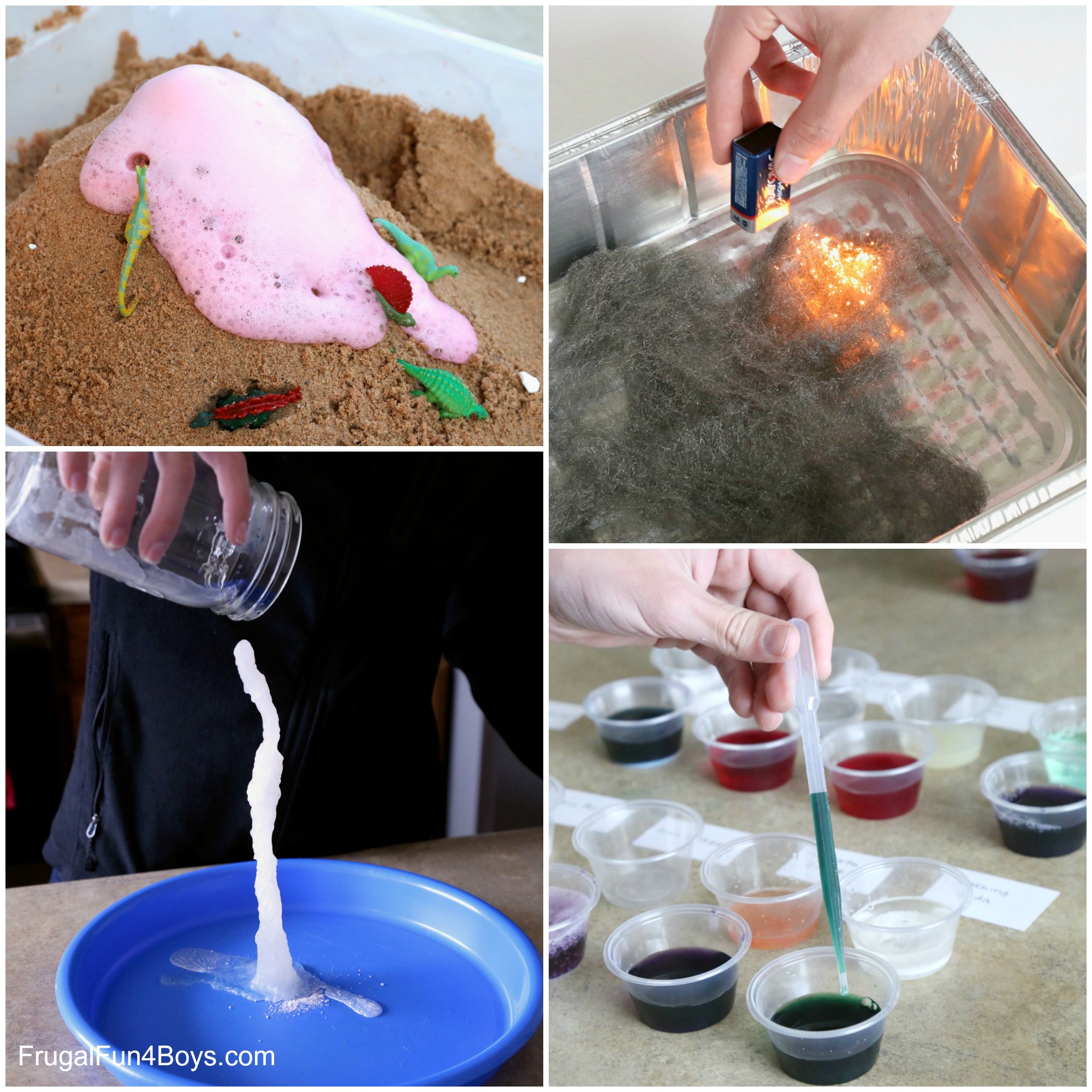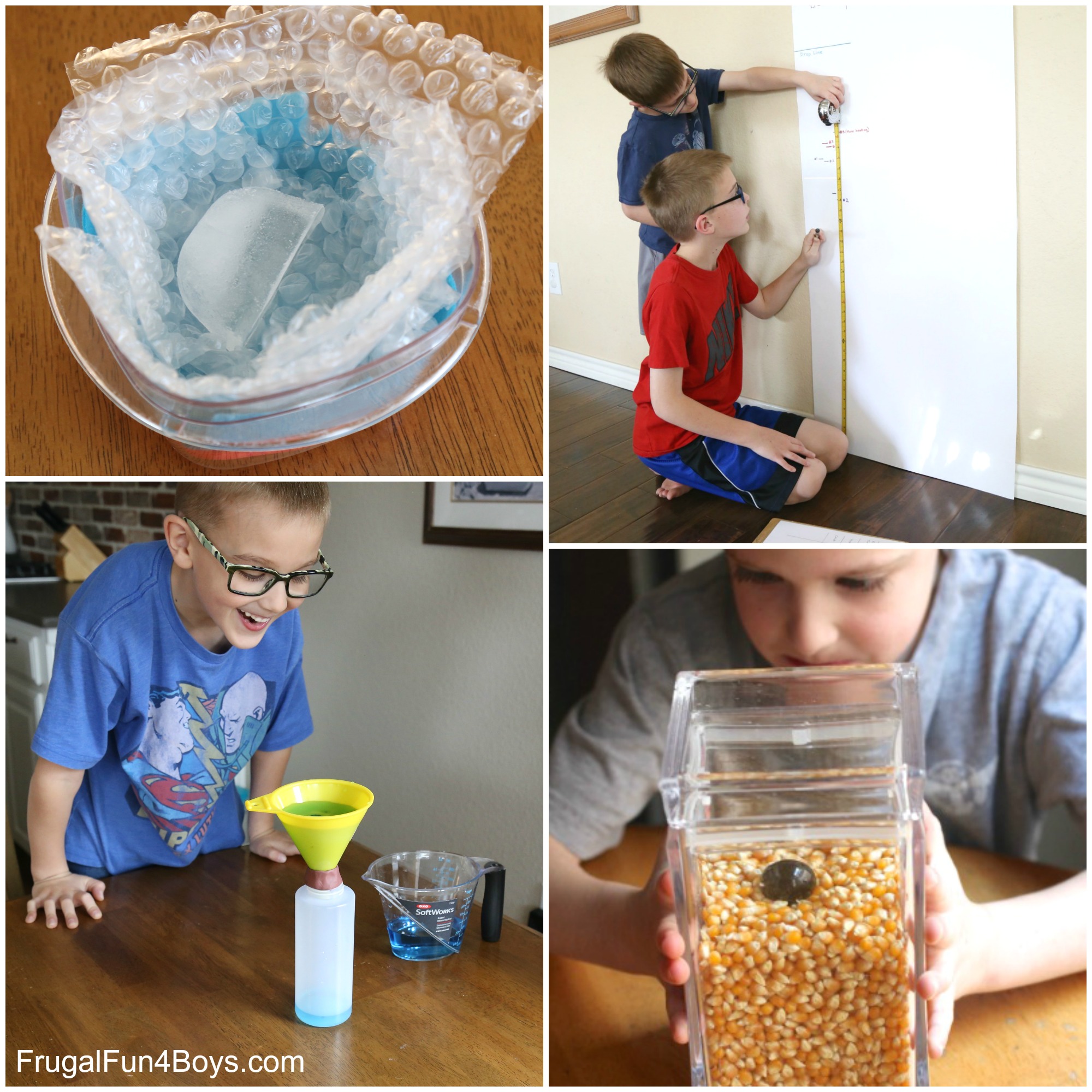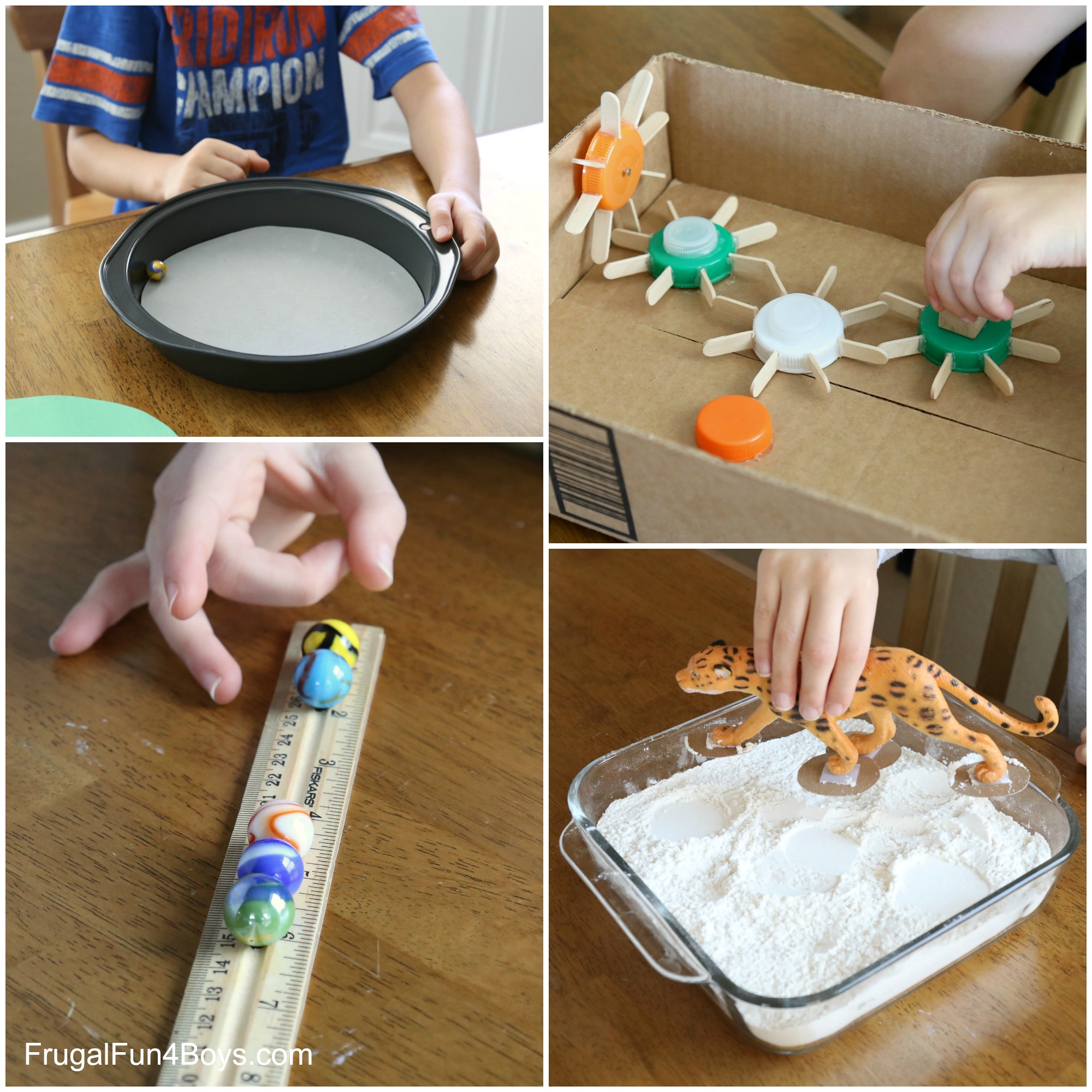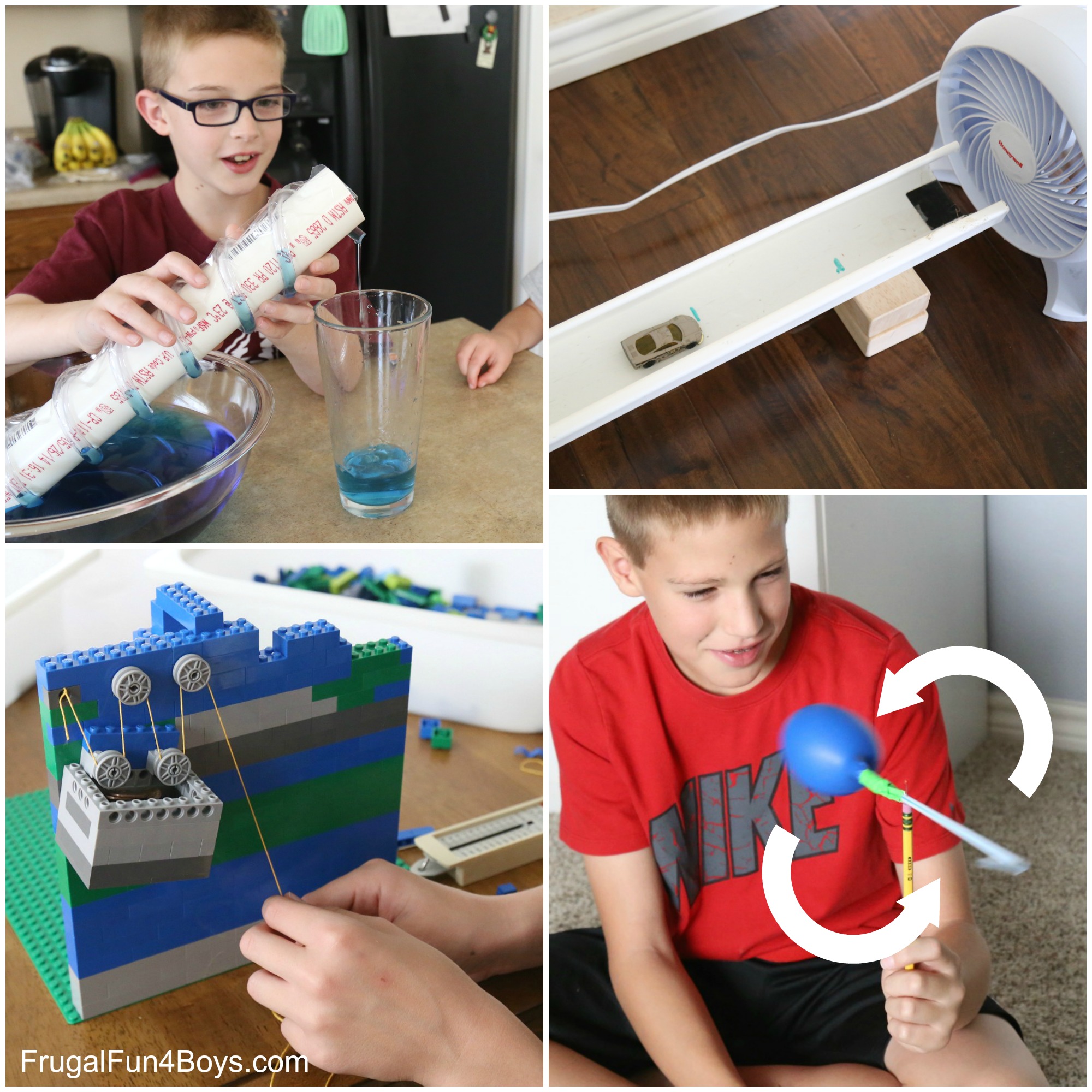Here’s a collection of cool science experiments that kids will love! I’ve chosen experiments that use simple materials and that teach important cornerstone science concepts.
Use these science experiments with your class or at home. Or, use them to create a fun science camp or science themed week!
Tips for a fun Science Week:
- Add some fun accessories if you have them, like safety goggles and lab coats.
- Hand out cheap spiral notebooks to be LAB NOTEBOOKS! Let your kids decorate the cover.
- Add in some science themed YouTube videos, or watch a fun science-y movie.
- Check to see if your local library has microscopes or other science equipment to borrow.
What to do when science goes wrong…
I know from experience that one of the obstacles to doing science experiments with kids is that they don’t always turn out the way they are SUPPOSED to turn out. That can be a challenge, especially if you have a child who is not-so-patiently asking why it didn’t work out!
Let me assure you that all of our experiments are tried and tested, and I don’t share things that we find frustrating. But I also want to say that it’s okay if an experiment doesn’t go perfectly the first time. What I mean by that is that sometimes it takes a little trial and error to figure out exactly how an experiment works, and that’s normal.

And, kids learn a LOT in the process of figuring out what went wrong. For example, yesterday we worked on some static electricity experiments to share with you all. We couldn’t get the balloons to do what they were supposed to do (repel each other), but then I realized that my son was letting the balloons touch. When the balloons touched each other, that equalized the charges between the balloons and there was no longer any repulsion! My son learned that when objects touch, they pass along their electric charge.
Another time we learned, while trying to burn steel wool with a battery, that the gauge of the steel wool matters. In fact, it matters A LOT. Once we had the right gauge, it worked perfectly!
Anyway, just a reminder that science is sometimes messy, but it’s always a learning experience. And now… on to the experiments!
Chemistry:

Make some Hot Ice out of baking soda and vinegar. This ice isn’t really ice… it’s a chemical solution that crystallizes instantly as you pour it! So cool, I mean hot. It really is hot to the touch because of the heat given off when it crystallizes!
Test for acids and bases by making your own Red Cabbage pH Indicator. This is really cool! Impressive results, and it’s easy and fail-proof.
This Sand Volcano is a fun twist on the classic baking soda and vinegar volcano! It’s MUCH easier than paper mâché, and kids can erupt the volcano over and over.
Make pennies shiny again with vinegar and salt! It’s amazing how bright and clean they get. Find your dirtiest pennies and try this experiment!
If you haven’t tried Blowing up a Balloon with Baking Soda and Vinegar, then you really should! This is fun for preschoolers on up.
Burn steel wool with a battery. This project requires adult help and supervision, but it’s SO FUN! Contain the whole thing in a baking pan to make it so easy.
Matter:

Demonstrate that Air Takes Up Space – it’s easy for kids to think that air is “nothing,” but air is matter because it takes up space and has mass. Prove that with this fun demonstration!
Here are Two Science Experiments with Density – the one with the ping pong ball in corn is really cool! It’s just so much fun to play with.
Bouncy Ball Science – kids will test to see if the temperate of the ball affects how high it bounces. This is so easy to do, and has very clear results. In other words, it’s a great low-frustration science experiment!
Don’t Melt the Ice! Kids will design a contraption that keeps ice from melting for the longest amount of time.
Build a Wind Turbine – use a cardboard coffee can and other simple materials to make this turbine that spins in the wind.
Force and Motion:

Show the effect of friction on the speed of a rolling marble with this Cake Pan Friction Experiment.
Here are two Easy Inertia Experiments to do with pennies. Demonstrate Newton’s first law of motion!
Transfer of Energy Experiment – use a ruler with a groove and some marbles to demonstrate how energy is transferred from one object to another. This is another simple experiment with impressive results that will likely surprise kids.
Use a toy animal to demonstrate How Snowshoes Work. Kids will really be able to see how snowshoes (or large paws) spread out the weight and keep someone from sinking into the snow.
Build Working Gears – out of popsicle sticks and plastic lids! And a cardboard box. This fun mechanical project uses all recycled materials!

Use LEGO bricks to build some pulleys. Kids will really be able to feel the mechanical advantage that pulleys create. Too cool!
Lift water with your own Archimedes screw. This requires some supplies from the hardware store (PVC pipe and plastic tubing), but it’s so cool. Kids will be really impressed because just looking at this, it’s hard to imagine it working. But it works REALLY well!
Explore velocity, mass, momentum, and air resistance with these Hot Wheels Car Science Experiments. There are printable recording sheets to go with both experiments.
Demonstrate Newton’s third law of motion with this Balloon Pinwheel.
Electricity and Magnetism:

Make some Magnetic Slime – this experiment combines chemistry (making slime) and magnetism! The slime really oozes under the power of a strong magnet.
Static Electricity Experiments with Balloons – two experiments that are lots of fun. Build an electroscope with items from around the house, and use balloons to demonstrate the forces of attraction and repulsion created by static electricity.
Use copper wire, a battery, and a neodymium magnet to make a Simple Electric Motor. It’s so fun to watch your motor spin.
Use cornstarch and water to make some Jumping Goop! This is a wacky project with static electricity that kids will really enjoy.
Make an Electromagnet – this is one of our favorite things to do. This post is from 2012, but I still have this exact equipment and we get it out every now and then! My third son used this as a presentation for his co-op class this year.


3 Comments
Mihaela Jun 9, 2020
I made the magnetic slime with the kids last week. Thank you for the recipe! 🤗
bernadine foley Jun 9, 2020
Great! I'm 69 years old and I'm learning along with the grandkids.
Christine Towgood Jun 10, 2020
Thank you for posting your experiments in nice clear way, I love showing my kids science.
Post a Comment